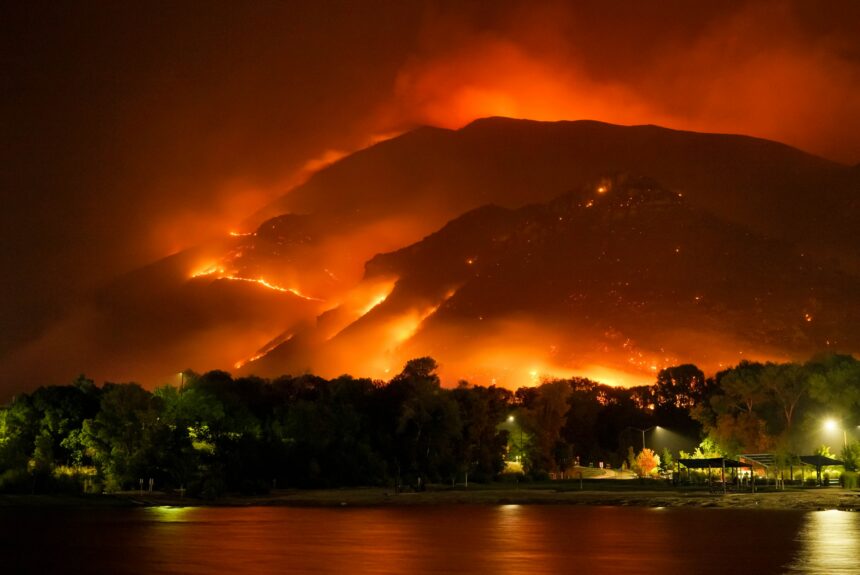From Canada’s fires, which have been burning for the better part of the summer, to the most recent Lahaina blaze that took 115 lives, wildfires have taken an economic, environmental, and emotional toll on families and communities. Realizing the priority to reduce wildfire risk, lawmakers are offering solutions through the recently House-passed Accurately Counting Risk Elimination Solutions (ACRES) Act.
The bill, sponsored by Rep. Tom Tiffany (R-WI), would require the Secretary of Agriculture and Secretary of Interior to submit annual reports to Congress on hazardous fuel reduction activities on federal lands. The bill would also standardize data collection for these activities.
>>>READ: Canada’s Wildfires: A Wake-up Call on the Need to Reduce Risk
While seemingly rudimentary, the ACRES Act will provide valuable insight into the ways that the federal government is actively managing and reducing wildfire risk on the 640 million acres of land it is responsible for which is roughly one-third of total land in the U.S. More information, better data, and more accountability should help guide the necessary reforms and actions that are needed to reduce wildfire risk on federal lands.
There are several challenges that the federal government and landowners face in reducing wildfire risk, one of the most significant being federal policy. Active forest management such as a prescribed burn or a thinning project would reduce fuel load and make wildfires far less damaging. Before undergoing those activities, however, a landowner, company, or agency must first undergo lengthy environmental reviews under the National Environmental Policy Act (NEPA), Clean Air Act (CAA), or the Endangered Species Act (ESA).
Navigating any one of these laws costs valuable time and money. Under NEPA for instance, it can take as long as 3.6 years and 4.7 years for a mechanical thinning or prescribed burn project to receive the green light and begin. Factor in the labyrinth of other regulations that these agencies must navigate and it quickly becomes clear why the U.S. Forest Service estimates that it has a forest restoration backlog of 80 million acres.
Population growth and poor housing policies are also increasing wildfire risk in the U.S. More and more people are building homes and moving to high-vegetation, high-risk areas known as the Wildland Urban Interface (WUI). Over the past 20 years, the WUI has become the fastest-growing housing zone in the United States. A June 2022 report from the Federal Emergency Management Agency and the U.S. Fire Administration estimated that 99 million people live in the WUI with 46 million homes accounting for $1.3 trillion in value. In California alone there are 140,000 state-subsidized housing units in the WUI.
The ACRES Act would require the USDA and DOI to include what fuel reduction activities were conducted in the WUI in their reporting. Markets are beginning to respond to the increased risk of WUI living. Allstate for instance has stopped selling homeowners insurance in California in response to climate-related disasters that have been exasperated by the increased population of the WUI.
Invasive species are yet another environmental threat that is making it harder to fight wildfires. In the case of Maui’s Lahaina fire, invasive species of guinea grass, molasses grass, and buffel grass played an outsized role in speeding up the blaze and making it spread more quickly to homes near the shore.
>>>READ: Invasive Species: An Environmental Threat Multiplier
Public-private partnerships, innovative thinking, and regulatory reform will all be necessary to reduce wildfire risk in the U.S. At the most basic level, policymakers must pass meaningful permitting reform. While the Fiscal Responsibility Act included several much-needed measures to speed up permitting, it failed to address the excessive litigation challenges that impede energy and conservation projects.
Empowering the private sector will also be critical to reducing risk. Nonprofits are already beginning to connect landowners and local governments with the necessary capital to undergo restoration projects. Blue Forest Conservation recently raised $50 million which it will use to finance restoration projects in high-risk areas in Oregon, California, and Washington. Additionally, policymakers have introduced bipartisan legislation, the Root and Stem Act, that will reduce barriers for the federal government to collaborate with local governments and landowners to fight wildfires.
As outlined in C3’s Climate and Freedom Agenda, there are several other initiatives and reforms that lawmakers can undertake to reduce barriers to active forest management in America. The ACRES Act is a welcome step to provide accountability and oversight on the fire reduction efforts of the federal government.
The views and opinions expressed are those of the author’s and do not necessarily reflect the official policy or position of C3.
